I've got a new series of Dinoponera photographs up at myrmecos.net. Click on the image above to see the gallery.
These giant black insects are the largest South American ants, and although there is at least one Asian Carpenter ant (Camponotus gigas) that's a bit bigger, Dinoponera weighs in as the world's largest stinging ant. They would seem to command a great deal of respect for such distinction, but in reality Dinoponera are rather shy animals.
Because these ants are so large- reaching over an inch long- they open up an array of photographic possibilities that can't easily be done with ants of more typical size. I had all sorts of fun experimenting with different lens configurations. Below is a sampling of images from the session.
The photo at the top of this post was taken with Canon's 100mm f2.8 macro lens. That's one of Canon's finest general macro lenses, capable of producing sharp portraits, and it is the first lens I reach for to shoot medium- to large-sized insects.
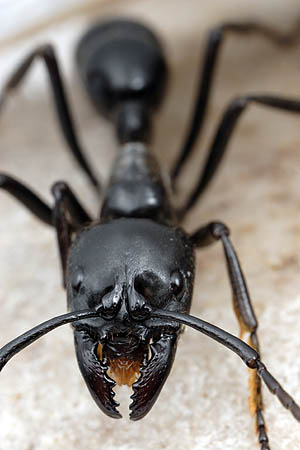
This shot used the more powerful Canon MP-E 65mm 1-5x macro lens, at 1x magnification.
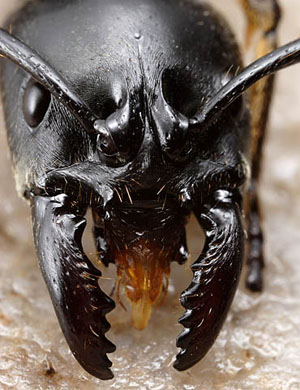
The same lens at about 3x magnification. As you can see, the MP-E lens is capable of impressive clarity and magnification.
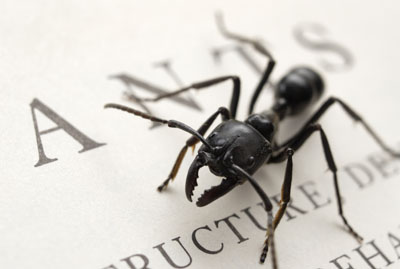
This shot of an ant walking across William Morton Wheeler's classic "Ants" text was taken through a Canon 35mm f2.0 prime lens on a 12mm extension tube. The extension tube allows an ordinary lens to focus close in, converting it for macro use. It's a great way to take macro photos without dropping lots of money on a specialized lens.
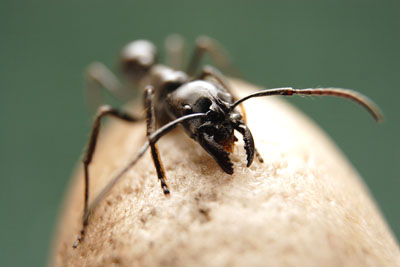
For even stronger wide-angle macro effect, I mounted Canon's 17-40mm wide angle zoom lens on the same extension tube. The lens is set to about 24mm, and at this setting the ant is very nearly touching the lens.

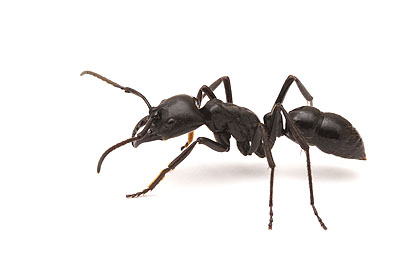
Great pictures. When I hear about this 65mm 1 - 5x macro lens it makes me wish I had invested in Canon instead of Nikon equipment! Are you using a light table to get those clean white backgrounds?
When I saw my first DINO walking in front of me as I sat on the forest floor near Iquitos Peru, it was life changing. It was akin to my first finback whale in the Gulf of California. Only much, much smaller.
Wonderful as usual ;). I love the one with the Dinoponera's drawing as a background. That is a great idea!
Adrian- the white background is just a sheet of plain printer paper, which overexposes when I meter on a black ant. I also bumped the contrast up a bit in PS.
Mike- Coooooool.
Benoit- Thanks- I borrowed the idea from one of Bob Taylor's Nothomyrmecia shots:
http://ant.edb.miyakyo-u.ac.jp/AZ/PCD1637/image/57.jpg
Hi,
I tried adding a Keno 1.4X extension tube to the Canon 17-40 L but the set doesn't focus at all. Should it be a teleconverter instead?
damn, i want this lens so bad... (the MP-E)
i was looking for examples of photos to show to a friend and googling i got to your blog... your shots are great. :)